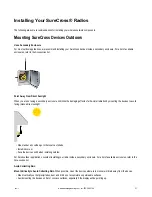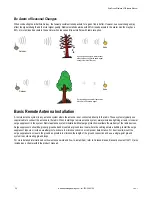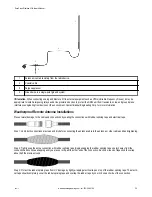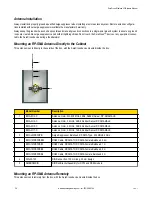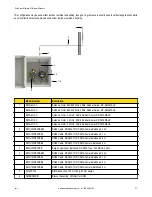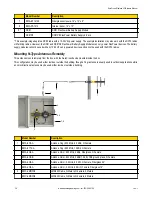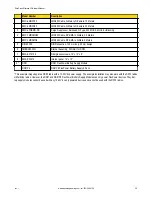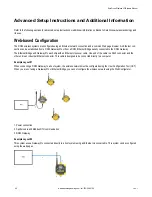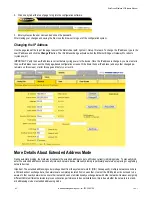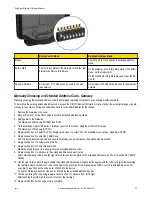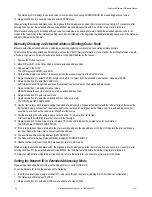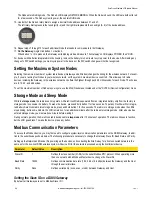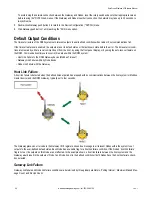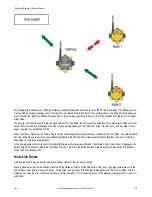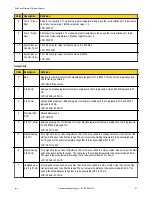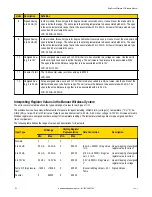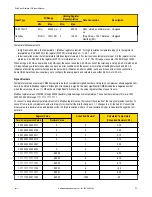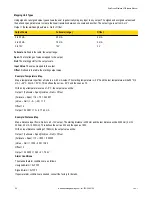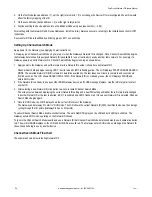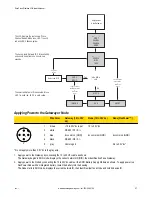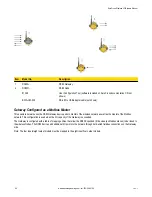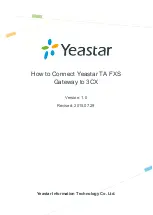
The Gateway's LCD displays (NID)
3. Single click button 2.
Enters the (NID) menu option.
4. Using both rotary dials on the front of the Gateway, select a Network ID. The left rotary dial acts as the left digit and the right rotary
dial acts as the right digit of the Network ID. In extended addressing mode, the Network ID can only be set from the rotary dials while
in the (NID) menu.
Any Nodes bound to this Gateway ‘follow’ the Gateway to the new Network ID automatically. The current Network ID and the new
Network ID display on the LCD panel.
5. Single click button 2.
Saves the new values.
6. Double click button 2.
Exits this submenu and the LCD displays (NID).
7. Double click button 2.
Exits to the main menu system and returns to RUN mode. The LCD displays *DVCFG.
Automatic Binding Using the Menu Navigation
The easiest way to bind the Gateway to its Nodes is by triple clicking button 2 to enter automatic binding mode. If you would prefer to
begin automatic binding mode using the menu structure instead of the buttons, follow these steps.
Before making any changes to the DIP switches, disconnect the power to the devices. For devices with batteries integrated into the
housing, remove the battery.
1. On the Gateway: remove the top cover.
2. Move DIP switch 1 to the ON position.
Extended Addressing Mode is activated using DIP switch 1.
3. Apply power to the Gateway.
The Gateway's LCD displays POWER, then *RUN.
4. On the Gateway, single click button 1 to advance across the menus, stopping at the DVCFG menu.
The Gateway's LCD displays (DVCFG).
5. Single click button 2 to select DVCFG. Single click button 1 to select from the available menu options, stopping at XADR.
The Gateway's LCD displays (XADR).
6. Single click button 2 to enter XADR mode. When the display reads (AUTO), single click button 2 again to begin the automatic binding
mode.
The LEDs flash alternately when the Gateway is in binding mode. Any Node entering binding mode will bind to this Gateway. The
Gateway's LCD displays NETWRK BINDNG.
7. On the Node: remove the top cover.
8. Move DIP switch 1 to the ON position.
Extended address mode is activated using DIP switch 1.
9. Apply power to the Node.
The Node's LCD displays POWER, then *RUN.
10. On the Node, single click button 1 to advance across the menus, stopping at the DVCFG menu.
The Node's LCD displays (DVCFG).
11. Single click button 2 to enter the DVCFG menu.
12. Single click button 1 to select from the available submenu options, stopping at XADR.
The Node's LCD displays (XADR).
13. Single click button 2 to enter the XADR submenu.
14. When the display reads (AUTO), single click button 2 to begin the automatic binding mode.
SureCross Wireless I/O Network Manual
rev. I
www.bannerengineering.com - tel: 763-544-3164
45

